Landscape Architects, like many other professions, have a variety of specialties. Some focus on site planning, others on urban landscape design, and some get down and dirty in residential design/build. It really runs the gamut. I have been trying to learn more about trees.
Not just tree species. I want to make better choices about which trees I put into my landscape plans. I want to better understand how trees grow, how they respond to stresses, and how to keep trees healthy. I’m hoping to become a certified arborist, and I’m lucky to live in a state where tree discussions are plentiful and the experts are willing to openly share their knowledge.
The Rochester Arborist Workshop is an annual conference held in Rochester, Minnesota. Experts in arboriculture donate their time to demonstrate and discuss hot topics in the field. This was a hands-on event, and the discussion was lively. This year’s experts were Dr. Gary Johnson from the University of Minnesota, Urban & Community Forestry, and Dr. John Ball from the University of South Dakota, Forestry.
The workshop covered a variety of topics, but I was most fascinated by the tree roots. Trees that were already slated for removal had been set aside for this event, so we were able to get up close and personal with the root systems. This is something everyone should see. Tree species were not recorded, and there are certainly a lot of factors that impact root growth, but here I’ve highlighted what I considered significant and interesting about each root system.
These are two trees that were roughly the same age and planted in similar open spaces. So, why are they so different? The tree on the left was mulched, and the tree on the right was not. The benefits of mulch are numerous, but here it clearly allowed for the development of a more fibrous root system than the tree planted beneath turf. More fibrous roots mean “a lot more mouths” for taking up nutrients.
This is the tree that was on the right of the previous photo. I couldn’t get over the size of some of these roots. The experts called this a “branching” root habit rather than having a tap root. These roots ARE as thick as a branch!
These are images of the same root system from different angles. At Kestrel we get a lot of questions about root growth and the belief that all tree roots are in the top 12” (30.5 cm) of the soil. In this case, most of the roots grew vertically, and are easily 4’ (1.2 m) deep. Again, check out the size of some of those roots! These are still considered branching roots, and this vertical growth is often seen in sandy river bottoms, where it’s easy for the roots to go straight down to reach the water.
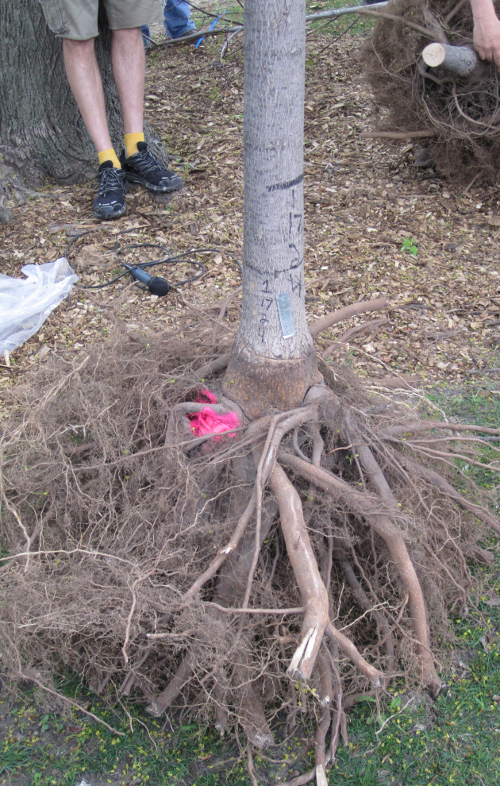
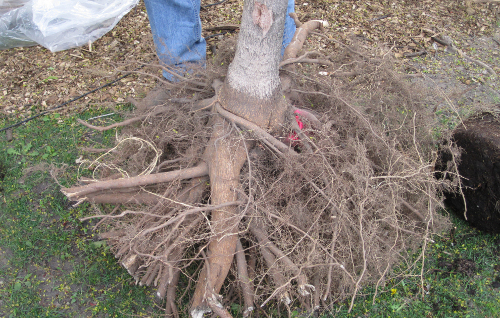 These are younger trees that were planted for a study at the University of Minnesota. The study looked at container-grown trees and how we plant them. Generally, the experts are finding that container-grown and balled-and-burlapped trees are planted too deeply IN the container. So, when we assume the depth in the container is the depth you should plant in the field, most trees are being planted far too deeply. In these images, the pink spray paint shows the ‘main order root’, which many experts are using as a guide for depth of planting rather than the ‘root flare.’ Planting trees too deep cause a lot of issues (less oxygen, stem girdling roots, etc.), and ultimately has a negative impact on potential lifespan.
These are younger trees that were planted for a study at the University of Minnesota. The study looked at container-grown trees and how we plant them. Generally, the experts are finding that container-grown and balled-and-burlapped trees are planted too deeply IN the container. So, when we assume the depth in the container is the depth you should plant in the field, most trees are being planted far too deeply. In these images, the pink spray paint shows the ‘main order root’, which many experts are using as a guide for depth of planting rather than the ‘root flare.’ Planting trees too deep cause a lot of issues (less oxygen, stem girdling roots, etc.), and ultimately has a negative impact on potential lifespan.
I could go on and on… but these are just a few of the items we were presented at the Rochester Arborist Workshop. I highly recommend the workshop if you’re planning a trip to the Midwest. Please share your tree photos with us too! We love to keep up on all things trees.
For more information on the Rochester Arborist Workshop, check out their website.
Top image: Friends of the Urban Forest
All other images: Marcy Bean

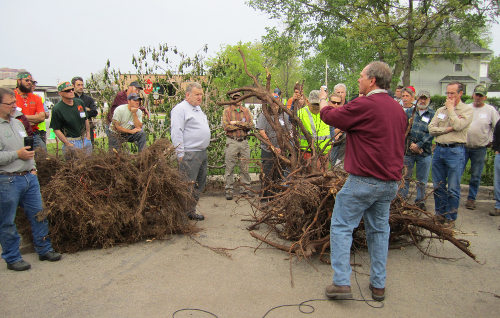
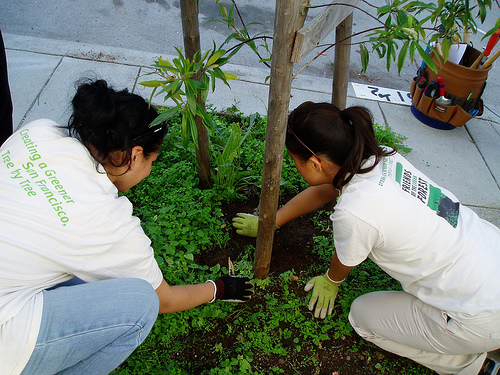

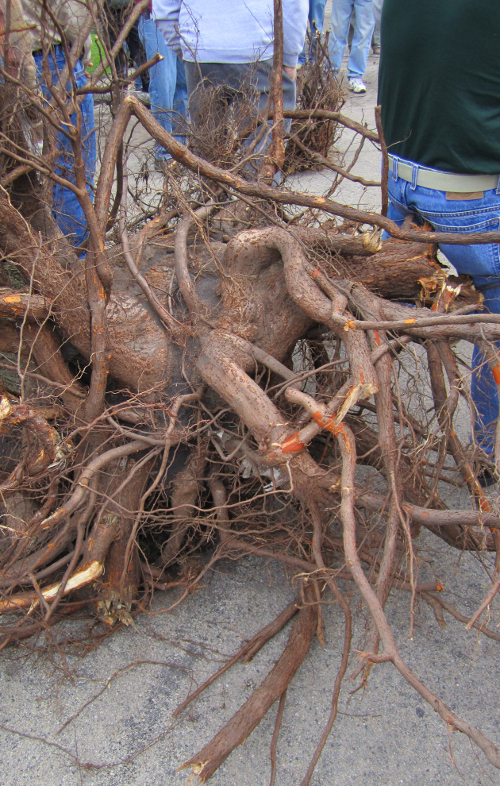
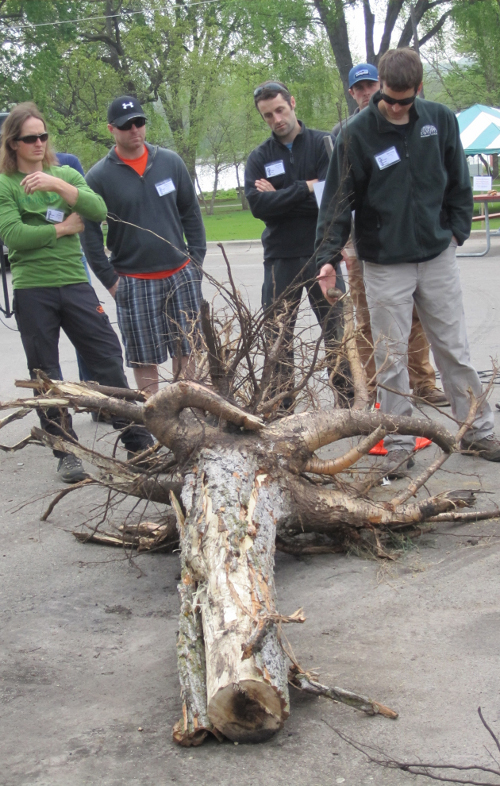
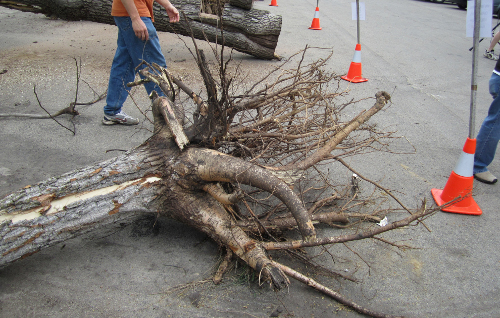
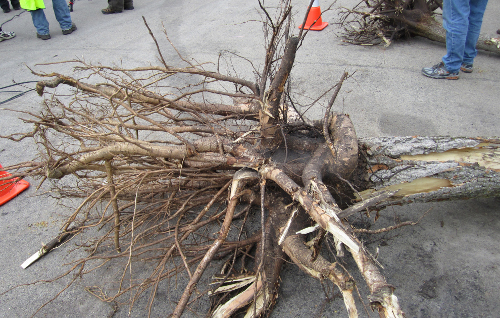
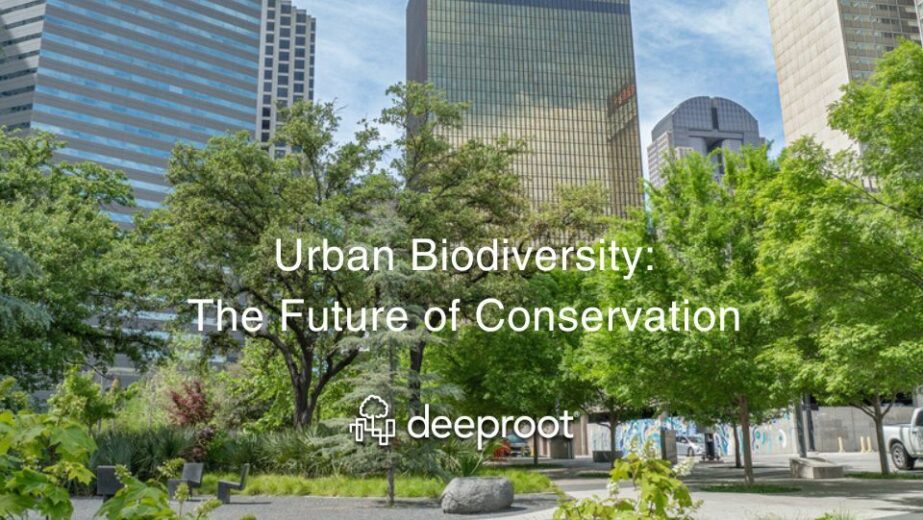



It should be noted that there are arborist workshops around the country. Check out your local chapter of the ISA.